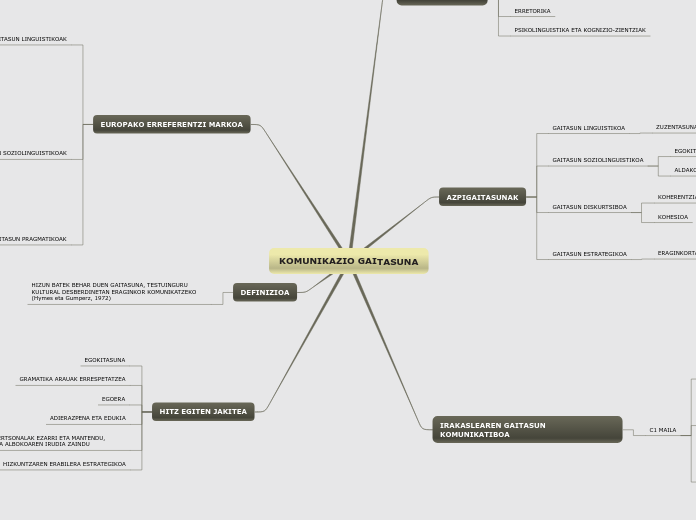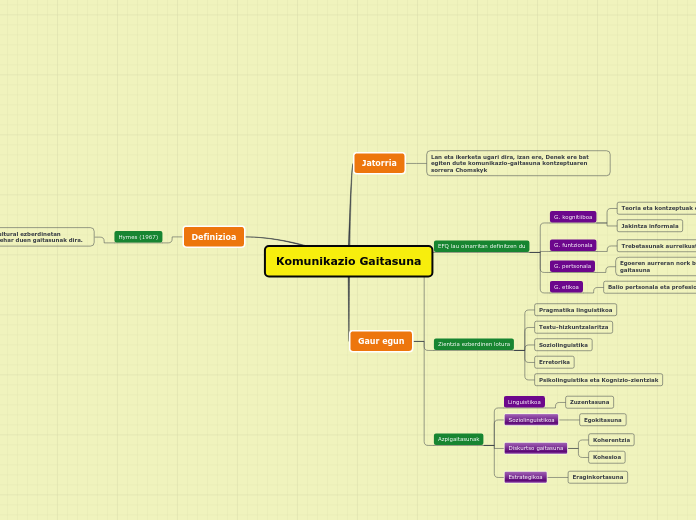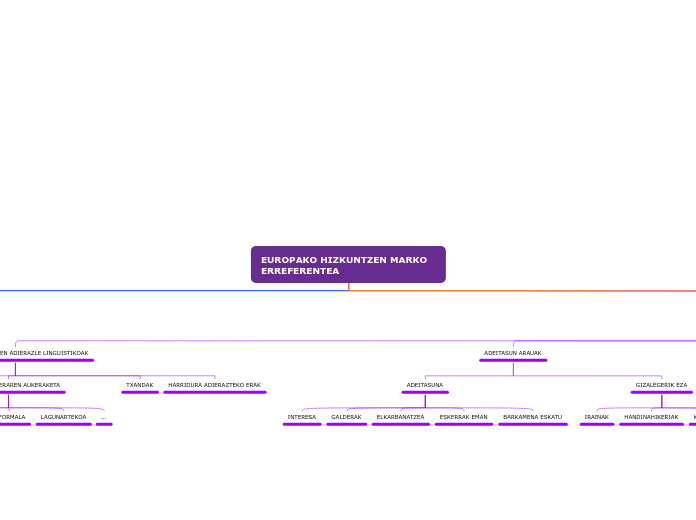KOMUNIKAZIO GAITASUNA
The first division between continents was made by ancient Greek navigators, who named them 'landmass, terra firma'.
Generally classified by convention rather than any strict criteria, nowadays seven regions are regarded as continents from a geopolitical point of view.
HITZ EGITEN JAKITEA
You can find on this continent:
- the world's largest river as per water volume, the Amazon.
- the highest volcanoes of the world -- Mt. Cotopaxi and Mt. Chimborazo.
- the country, Brazil, which is the largest coffee producer in the world.
- the second-highest mountain range in the world, the Andes.
HIZKUNTZAREN ERABILERA ESTRATEGIKOA
ERLAZIO INTERPERTSONALAK EZARRI ETA MANTENDU, BAKOITZAREN ETA ALBOKOAREN IRUDIA ZAINDU
ADIERAZPENA ETA EDUKIA
The world's largest snake and the second-longest lives here.
Name this snake as well as other animals that can be found in South America.
EGOERA
The largest forest, which covers 30% of South America's total area, is famous for its biodiversity. It’s crisscrossed by thousands of rivers, including the powerful Amazon.
Name this forest as well as its type.
GRAMATIKA ARAUAK ERRESPETATZEA
The world's highest uninterrupted waterfall can be found here.
Write down its name, height and the country in which you can find it.
There are 12 countries that make up South America.
Name as many of you can! Don't forget about their capitals.
DEFINIZIOA
HIZUN BATEK BEHAR DUEN GAITASUNA, TESTUINGURU KULTURAL DESBERDINETAN ERAGINKOR KOMUNIKATZEKO (Hymes eta Gumperz, 1972)
EUROPAKO ERREFERENTZI MARKOA
North America has five time zones and it is the only continent with every type of climate.
North America was named after the explorer Amerigo Vespucci and is also known as the 'New World'.
The world's largest sugar exporter among the seven continents - Cuba - also called the 'sugar bowl of the world' is located here.
GAITASUN PRAGMATIKOAK
Native Americans have lived along this river and its tributaries for thousands of years. Most were hunter-gatherers, but some formed agricultural societies.
Formed from thick layers of the river's silt deposits, this river's embayment is one of the most fertile regions of the United States; steamboats were widely used in the 19th and early 20th centuries to ship agricultural and industrial goods.
Name this river.
ANTOLAKETA GAITASUNA
GAITASUN FUNTZIONALA
DISKURTSO GAITASUNA
GAITASUN SOZIOLINGUISTIKOAK
The world's largest freshwater lake by surface area and the third-largest freshwater lake by volume can be found here. It provides a route for the transportation of iron ore, as well as grain and other mined and manufactured materials.
Large cargo vessels called lake freighters, as well as smaller ocean-going freighters, transport these commodities across this lake.
Name this lake.
DIALEKTOA ETA AZENTOA
ERREGISTRO EZBERDINTASUNAK
HERRI JAKINTZAREN ADIERAZPENAK
ADEITASUN ARAUAK
GIZARTE HARREMAN ADIERAZLE LINGUISTIKOAK
GAITASUN LINGUISTIKOAK
There are 23 countries that make up North America.
Name as many of you can! Don't forget about their capitals.
GAITASUN ORTOEPIKOA
GAITASUN ORTOGRAFIKOA
GAITASUN FONOLOGIKOA
GAITASUN SEMANTIKOA
GAITASUN GRAMATIKALA
GAITASUN LEXIKOA
IRAKASLEAREN GAITASUN KOMUNIKATIBOA
Australia is the world's smallest continent and is also known as an 'island continent' as it is surrounded by water on all sides.
It includes 14 countries and it is the least populated continent.
Its name comes from the Latin word 'australis' meaning 'southern' because it lies entirely on the south of the equator.
C1 MAILA
Australia is home to some animals that can't be found anywhere else in the world.
Name at least 6 of these unique animals.
3 EREMUETAN
GURASOEKIN
IRAKASLEEKIN
IKASLEEKIN
IDATZIZKOA
ULERMENA
IDAZMENA
AHOZKOA
ENTZUMENA
MINTZAMENA
AZPIGAITASUNAK
Europe is separated from Asia by the Ural mountains and the Caspian Sea.
It is surrounded by water on three sides: Mediterranean Sea in the south, Atlantic Ocean in the west, and the Arctic Ocean in the north.
Three-fourth of the world's potatoes grow in Europe.
GAITASUN ESTRATEGIKOA
Europe has many exceptional animals, birds, and reptiles with unique methods of staying and hunting.
Name at least 4 of them.
ERAGINKORTASUNA
EZ-HITZEZKOA
HITZEZKOA
GAITASUN DISKURTSIBOA
Europe is a large region, with several major rivers that connect its many countries. There are five primary rivers in Europe, and one of them flows through 10 countries, more than any other river in the world.
Name these rivers.
KOHESIOA
KOHERENTZIA
GAITASUN SOZIOLINGUISTIKOA
Europe is one of the smallest continents, yet it is home to some of the largest mountain ranges.
About 20% of the total landmass of the continent is considered mountainous.
Name the 5 longest mountain ranges in Europe.
ALDAKORTASUNA
EGOKITASUNA
GAITASUN LINGUISTIKOA
The most beautiful cities in the world can be found in Europe. History, architecture, arts, and famous cuisine is representative almost to each country.
Out of 51 countries how many you can name?
And how many capitals?
ZUZENTASUNA
ZIENTZIA DISZIPLINA
Antarctica is not only the coldest place on Earth but also the highest, driest, windiest and emptiest, completely covered with ice.
75% of the world's ice and 70% of the Earth's fresh water is located here.
Summer months of December to February give 24 hours of light, while the winter months of late March to late September are pitch dark the whole day.
There are no permanent inhabitants, except for scientists maintaining research stations in Antarctica.
PSIKOLINGUISTIKA ETA KOGNIZIO-ZIENTZIAK
ERRETORIKA
SOZIOLINGUISTIKA
TESTU HIZKUNTZALARITZA
PRAGMATIKA LINGUISTIKOA







